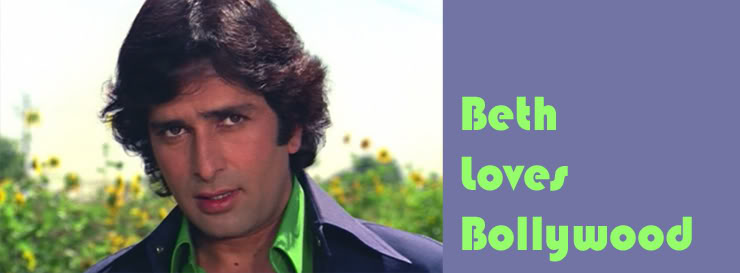
Beth Watkins calls herself the Foreign Minister of Shashi Pradesh and has taken an oath to share with the world any Shashiliciousness she may come across. This blogger from Illinois is a Shashi Kapoor devotee and writes about him and all things Bollywood on the popular Beth loves Bollywood. She started the blog in 2005 and now gets over 30,000 visitors a month.
Greta Kaemmer began blogging about Bollywood because she otherwise had nobody to talk to about Hindi cinema, and “people need to know about Dara Singh movies.” Greta, the memsaab of Memsaab Story — (check out the Nahiiin! Face Gallery on the blog) confesses that she loves old Hindi movies, “especially the ‘loony B-grade types’.”
It’s been a hundred years since the release of the first Indian movie, and what a long way we have come. Last year in Egypt, sellers of tourist trinkets and street snacks called out “AmitaBatchaaan!” and “KarrinaKaif!” wherever I turned. On the other side of the world, China recently went crazy over 3 Idiots, the first Indian movie to be released there in many years. From the USA to Japan, Bollywood-style dancing classes have garnered great popularity all over the world. Director Baz Luhrmann, who gave us a nod with Moulin Rouge, says in an interview about a Bollywood movie he watched, “2,000 audience members, high comedy, high tragedy, brother kills brother, [they] break out in some musical numbers, all jumbled up together in 4 hours of Hindi. We thought that was amazing. So our question was, ‘could we create a cinematic form like that?'”
Beth was similarly hooked by the drama and dance experience of Bollywood when she watched Gurinder Chadha’s Bride and Prejudice in 2004. She says, “After that, I went into my local video store and just pulled two things off the shelf. I picked Mujhse Dosti Karoge because the people on the cover were so happy-looking (Kareena Kapoor, Rani Mukherjee, and Hrithik Roshan) and Lagaan because I had seen it mentioned on a list of recommended films on the web forum BollyWhat.”
Like other firangi filmi bloggers, Beth watches Hindi movies with English sub-titles and is a storehouse of trivia on Hindi cinema from the 1960s and 70s. Go on; ask her the names of people playing miniscule side characters and how Hindi movie adaptations of Jane Austen novels have fared. Ditto Greta. She says, “I love discovering more about the background and character actors who populate Hindi movies, and how long they worked, and once I know who they are, I see them in everything. Finding Nazir Kashmiri (Ramu Kaka!) was a watershed moment in my life.”
Sanni of So They Dance, on the other hand, is a fan of Indian and not just Hindi cinema. Her favourite directors include Prabhu Deva and Shankar, and she admits to a passion for the “Southie stuff.” Her first brush with Indian cinema was Kabhi Khushi Kabhi Gham, which her music teacher showed as part of a lesson on popular Indian music! Sanni, who is Finnish, was captivated; “I didn’t even care when the narrative became suddenly and completely illogical — abruptly transitioning to Egypt for a song, with Kajol’s sari colour changing nearly every time I blinked.”
It is not always easy for these bloggers, but Bollywood’s charm always wins them over. According to Greta, “There are moments of frustration and sometimes sheer pain — realizing how many movies and how much history is already lost, and seeing very few real efforts being made at preservation by the industry. I go through periods where I feel quite exhausted from struggling through crappy video quality, huge ugly logos and no subtitles — and very sorry for myself-but the cinema always draws me back. There is so much to love!”
These bloggers indeed thumb their noses at those among us who believe that all of Indian cinema is about the formulaic naach-gaana and dishoom-dishoom routines. Sanni, for instance, says, “There’s always something new to discover, whether it’s an actor or a director or a genre, as Indian cinema is so varied and vast. The more you watch, especially if you are adventurous enough to look outside Hindi and go for Tamil, Telugu, Malayalam, and Bengali cinema, the more you learn about the variety and the talent Indian cinema has to offer.” So take that, you cinema cynics.
***
Published in the Sunday Guardian, February 18, 2013 as Bollywood’s foreign appeal finds online expression…